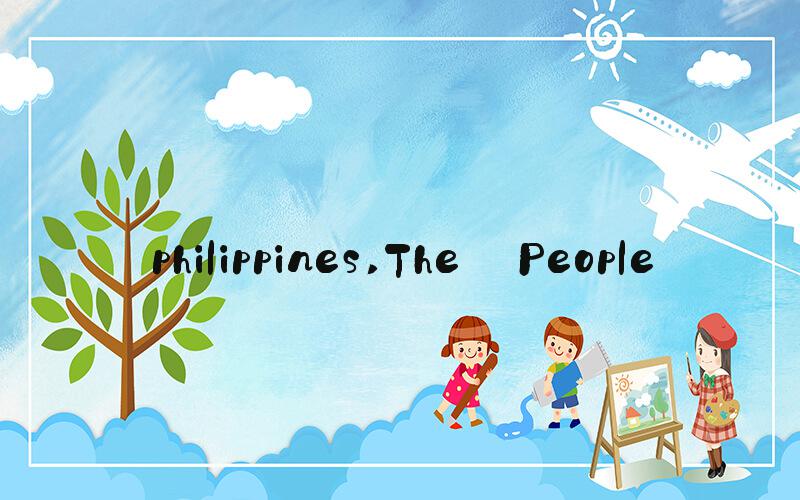AI答案
 Philippines: A Diverse and Vibrant Nation
Philippines: A Diverse and Vibrant Nation The Philippines is a country located in Southeast Asia with a rich cultural heritage, stunning natural landscapes, and a diverse population. The country is made up of over 7,000 islands, each with its unique history and way of life. The Philippines has a complex and fascinating past, having been ruled by various colonial powers over the centuries, including Spain, the United States, and Japan.
The PeopleThe Philippines is a melting pot of different ethnic groups and cultures. The largest ethnic group is the Tagalog, who primarily reside in the central region of the country. Other significant ethnic groups include the Cebuanos, the Ilocanos, the Bicolanos, and the Waray people. The culture and traditions of these different groups are distinct, but they all share a deep love for family and community.
The Filipino people are known for their warmth and hospitality, as well as their love of music, dance, food, and sports. Traditional Filipino festivals, such as the Ati-Atihan and Sinulog festivals, are colorful and lively celebrations that showcase the country's unique culture and customs.
The LandscapeThe Philippines is blessed with some of the most beautiful natural landscapes in the world. The pristine beaches and crystal clear waters of Boracay, Palawan, and Siargao make the Philippines a world-renowned destination for beach lovers. The country also boasts of enchanting waterfalls, such as the Pagsanjan Falls and the Tinuy-an Falls, and stunning mountain ranges, such as the Cordillera Mountains and the Sierra Madre Mountains.
The Philippines is also home to a diverse range of flora and fauna, with many species found only in the country. The Tarsier, a nocturnal primate with disproportionately large eyes, can only be found in the islands of Bohol and Samar. The Philippine Eagle, one of the largest and most powerful eagles in the world, is found only in the country's forests.
The FoodFilipino cuisine is a fusion of different culinary traditions, including Spanish, Chinese, and Malay influences. The country is known for its savory meat dishes, such as adobo, a classic Filipino dish made with chicken or pork marinated in vinegar and soy sauce. Other popular Filipino delicacies include lechon, a whole roasted pig, and sinigang, a sour soup made with tamarind.
Street food is also an essential component of Filipino culture, with vendors selling everything from barbecue skewers and fish balls to sweet treats like turon and halo-halo. Filipino cuisine is an integral part of the country's identity and has started to gain recognition worldwide.
The ChallengesDespite the beauty and vibrancy of the Philippines, the country also faces significant challenges. Poverty remains widespread, with many Filipinos struggling to make ends meet. The country also experiences natural disasters, with typhoons, earthquakes, and volcanic eruptions posing a constant threat.
The Philippines is also grappling with political instability and corruption, which have hindered the country's development and progress. However, despite these challenges, the Filipino people remain resilient, optimistic, and ever-hopeful.
The FutureThe Philippines is a country with enormous potential and a bright future. The current government is focused on economic growth, infrastructure development, and poverty reduction. There is a growing middle class, a thriving business community, and a vibrant tourism industry, which is helping to propel the country forward.
The Philippines also has a young and dynamic population, with a burgeoning tech industry and a growing startup ecosystem. The country's strategic location and abundant natural resources make it an attractive destination for foreign investors and entrepreneurs.
In conclusion, the Philippines is a country of contrasts, where poverty and natural disasters coexist with vibrant culture and promising prospects. The Filipino people are a testament to the country's resiliency, and their warm hospitality and innate optimism are a source of inspiration to many. With the right leadership, policies, and investments, the Philippines has the potential to become a powerhouse economy and a shining example of progress and development in the region.
